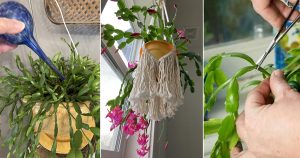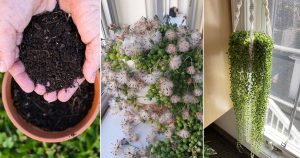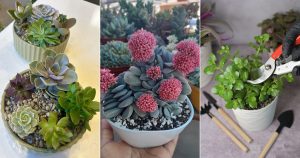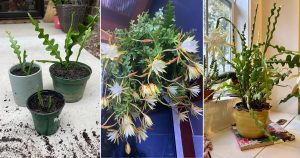Chosen for long-lasting blooms, here are the easy tricks that keep Kalanchoe bushy and flowering non-stop.
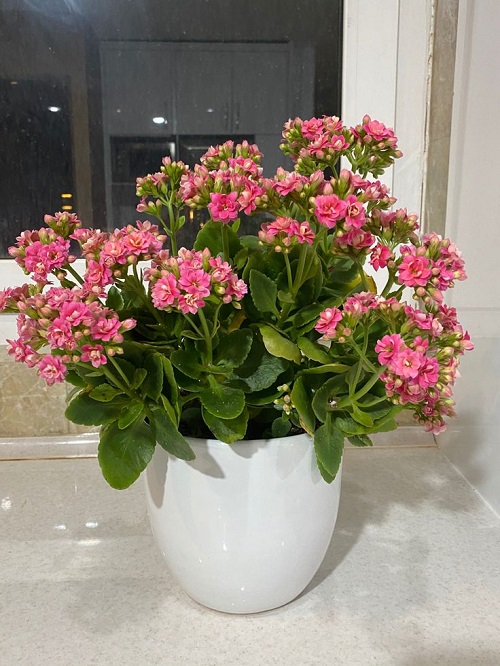
Looking for a low-maintenance flowering succulent? Kalanchoe ticks all the boxes—it’s easy to care for and blooms for ages. If yours is being stubborn about blooming, try these tricks to keep it bushy and bursting with flowers!
Tricks That Keep Kalanchoe Bushy and Flowering Nonstop
1. Lighting is Crucial
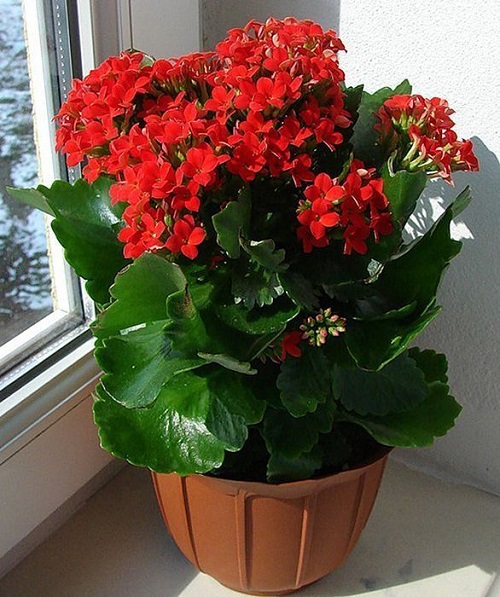
If you have grown succulents before, you already know how important lighting is, especially for flowering succulents like Kalanchoe. Though the rule of thumb is to give them bright, indirect light, how do you even ensure that?
For optimal growth and flowering in your Kalanchoe, you need a medium or a bright light situation from a south-facing or west-facing window. But keep your plant a few feet away from the window, especially if your window is big! This will protect your plant from getting burnt.
Note: Note: Low light = no blooms and leggy growth. In dim winters, use a grow light to keep things moving. Also, rotate the plant often.
2. Pick the Right Pot

Succulents and bad drainage are mortal enemies. If the pot traps water, the roots will rot—and there go your blooms.
When buying a Kalanchoe, it typically comes in a 6-inch pot and stands about a foot tall. Smaller ones in 4-inch or 2-inch sizes are perfect for dish gardens. Regardless of the size, make sure the pot has proper drainage holes.
If it’s wrapped in foil, a decorative pot, or one with no holes—repot it immediately into something breathable.
Tip: A terra-cotta or unglazed clay pot is ideal—it helps the soil dry faster and prevents overwatering issues.
3. Watering Right
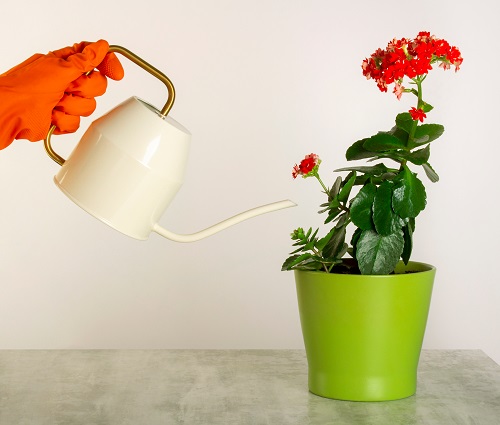
Now this is directly linked to the lighting part. Thus, you can understand how important it is to give the right light to your Kalanchoe for bushiness and flowering! The more light you give, the deeper watering you will have to do while letting the soil dry out in between.
Flowering Kalanchoes need water every other week when kept under bright light. You must water thoroughly, ensuring all the excess water drains out completely.
4. Maintain Warm Temperatures
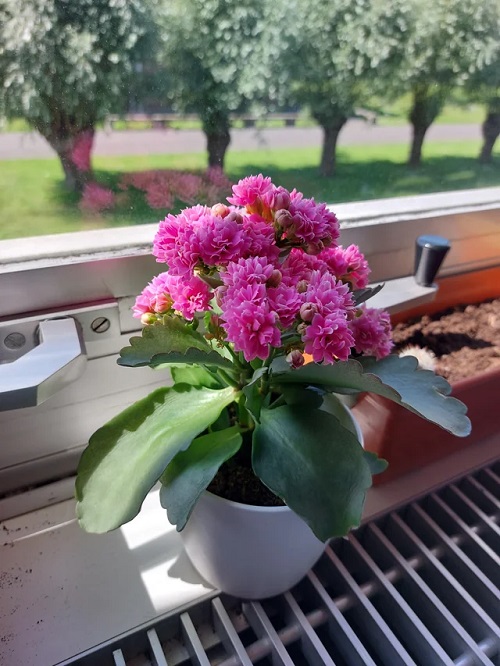
Did you know that in tropical and subtropical climates, you can practically grow the Kalanchoe outdoors as a perennial? Being a succulent, it really loves warm temperatures, and this plays a direct role in the flowering as well!
Even indoors, it’ll flower just fine—but if you increase room temperatures slightly, the buds might appear faster.
Keep the temperature above 60°F (15°C). It dislikes cold drafts, chilly windowsills, and sudden temperature drops.
5. Prune and Pinch
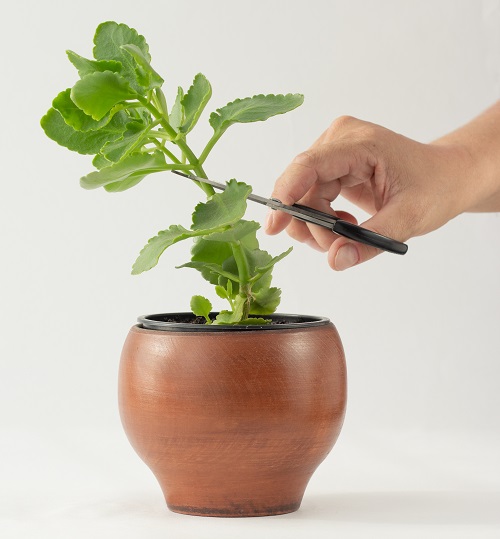
Now this is pretty much the same for every plant, houseplants and succulents alike. If you want them to grow bushy, you gotta prune them.
Even a sparse Kalanchoe will start to grow bushier and more beautiful once you start removing spindly stems, branches, and leaves. This allows the plant to stop sending its energy and nutrients to dying parts and instead focus on growing bushier.
You can safely prune the plant down by about half its height after the bloom season—it’ll come back fuller and tidier. Don’t be afraid to pinch—it promotes branching!
6. A Little Fertiliser Goes a Long Way
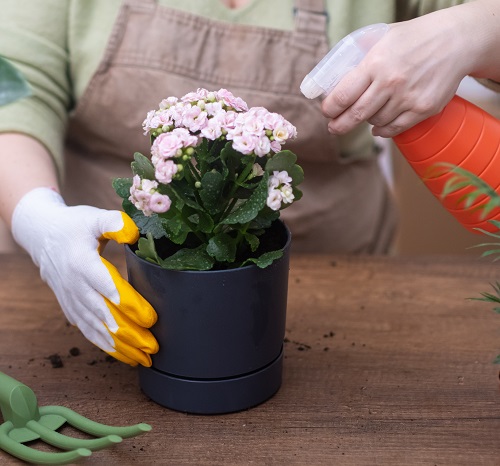
Though not a heavy feeder, your Kalanchoe will love a little snack once in a while. Choose any granular or liquid fertilizer that is well-balanced and organic, and feed it once a month during spring and summer. Do not fertilize at all in winter.
If you are especially concerned about less-than-normal flowering, switch to a fertilizer that is higher in phosphorus. When growing in a garden, you will only need to feed the plant once in spring.
Always water your plant before feeding to avoid root burn, especially when using liquid fertilizers.
Note: Avoid over-fertilizing—it can cause salt build-up and leaf burn. Never feed a stressed plant, especially one that’s been over- or under-watered.
7. Create a Cycle of Light and Dark
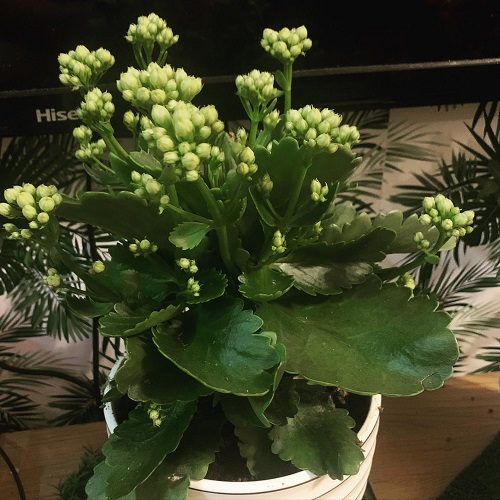
One often-missed secret: Kalanchoe needs long nights in winter to reset its bloom cycle. Without this, your plant might not flower at all.
Give your plant 14 hours of uninterrupted darkness daily for six weeks during winter. You can use a cardboard box, an opaque cover, or place it in a closet after sunset to mimic natural winter nights. No peeking! Even a small amount of light can disrupt the cycle.
After this rest period, bring it back into bright light—and wait for those flowers!
8. Monitor for Pests
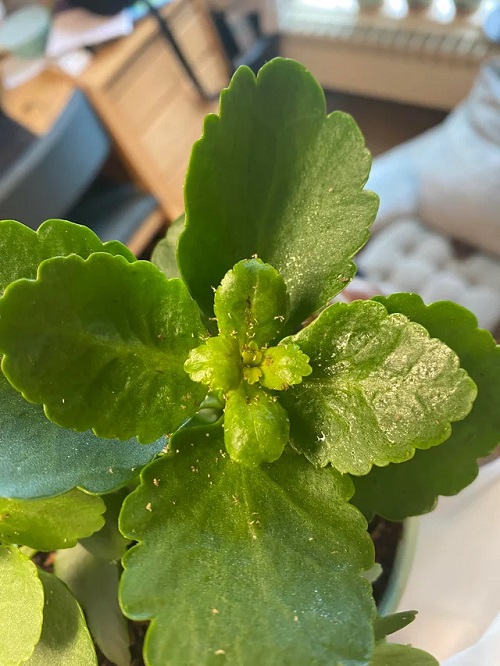
Kalanchoes are generally pest-resistant, but they’re not invincible. Overwatering and humidity can invite mealybugs and aphids, especially on flowering plants.
Inspect new leaves and the undersides regularly. These bugs love hiding where it’s cozy. If you see any, blast them off with a strong spray of water.
Mix neem oil with water and a few drops of dish soap—spray weekly to prevent pest buildup.
Make sure you follow all of these tips and tricks when growing your Kalanchoe. Afterward, tell us which trick helped you the most in keeping your Kalanchoe bushy and flowering in the comments below!

